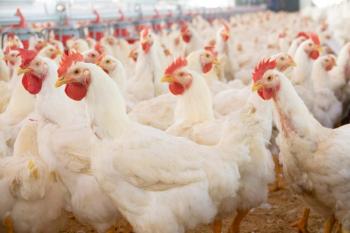
Porcine epidemic diarrhea virus continues to spread across U.S.
Mortality rate in suckling pigs as high as 100 percent creates potential impact on pork supply.
Porcine epidemic diarrhea virus (PEDV) continues to spread across the country throughout 16 states. Herd loss may affect pork production as countless pigs—most suckling and early-weaned pigs—die from the gastrointestinal disease. Since the identification of the virus was confirmed in the United States May 17, more than 400 cases have been reported.
A report prepared by the U.S. Department of Agriculture Animal and Plant Health Inspection Service (USDA-APHIS), National Veterinary Service Laboratories and the National Animal Health Laboratories Network indicates a jump in positive tests between the week of May 13—with 10 cases contained to Iowa, Minnesota and Colorado—to 44 cases the week of May 20. The virus seemed to spread significantly in Iowa, increasing from four cases to 25. The virus also spread to Missouri and Oklahoma.
Cases in suckling and nursery pigs became prevalent the week of June 16 with a high mortality rate of 30 percent to 100 percent in early-weaned pigs in naïve herds. “Nursery pigs, grow/finish pigs and adult animals experience a high rate of morbidity but low mortality with the virus,” says Harry Snelson, director of communications for the American Association of Swine Veterinarians. “Therefore, any potential impact on pork supply will be a number of months down the road.”
The Iowa Pork Industry Center says PEDV is a coronavirus related to transmissible gastroenteritis virus (TGEV). The primary clinical sign in outbreaks that occur in previously naïve herds is severe diarrhea in pigs of all ages. Clinical signs are essentially identical to those expected with acute TGEV infection. The Pork Industry Center says after the initial epidemic, PEDV usually becomes endemic. It is spread via the fecal-oral route with a short incubation period of 12 to 24 hours. The virus is shed for 7 to 10 days. “Once the virus is present in a naïve herd it spreads very easily and you probably want it to spread quickly so all the animals get exposed and begin developing immunity,” Snelson says.
Officials believe herd closure followed by 100 percent feedback exposure will be a successful herd elimination protocol. The virus is easily spread by trucks, boots and on clothing contaminated with fecal material from shedding pigs, but officials believe biosecurity measures found effective in containing TGEV will also be effective with PEDV. “Several virucidal disinfectants have been demonstrated to be effective to inactivate PEDV, such as formalin (1 percent), sodium carbonate (4 percent anhydrous), lipid solvents and strong iodophors (1 percent) in phosphoric acid,” says the Iowa Pork Industry Center on its PEDV factsheet. “Examples of disinfectants effective against PEDV include Clorox, Virkon S, Stroke Environ and Tek-Tol.” The organization says sanitizing and drying or heating pig trailers is also effective against PEDV. Temperatures above 150 degrees F for more than 10 minutes will inactivate the virus.
Snelson says sanitation and biosecurity measures are essential to prevent the spread of the virus by people—specifically transport vehicle personnel. “We recommend that trucks hauling pigs be thoroughly cleaned and disinfected, visitors should be limited, incoming supplies should be thoroughly disinfected, people and equipment having contact with other pigs should not be brought onto a naïve farm,” he says.
J.F. Lowe, DVM, MS, with the University of Illinois College of Veterinary Medicine, conducted a study between June 14 and June 20 to assess risk of promoting the initial outbreak of PEDV by estimating the rate of contamination of trailers during the unloading process. Preliminary results showed of the trailers that were not contaminated at the time of arrival, 11.4 percent were contaminated during the unloading process. Across all plants, each contaminated trailer at arrival resulted in 0.96 additional trailers that were contaminated during the unloading process. "These data suggest that harvest plants and similar livestock collection points serve as an effective method of contaminating fomites with PEDV and could play an important role in expanding the outbreak of PEDV in the US," Lowe concluded in the preliminary abstract.
PEDV does not affect people—pigs are the only known host. It is not a food-safety concern. The virus is not a trade-restrictive disease and has been present in many countries such as Great Britain and Asia for decades. It is unknown at this time how this outbreak was introduced in the U.S., but Snelson says the virus is 99.4 percent homologous to a PEDV that was circulating in China in 2012.
Newsletter
From exam room tips to practice management insights, get trusted veterinary news delivered straight to your inbox—subscribe to dvm360.






